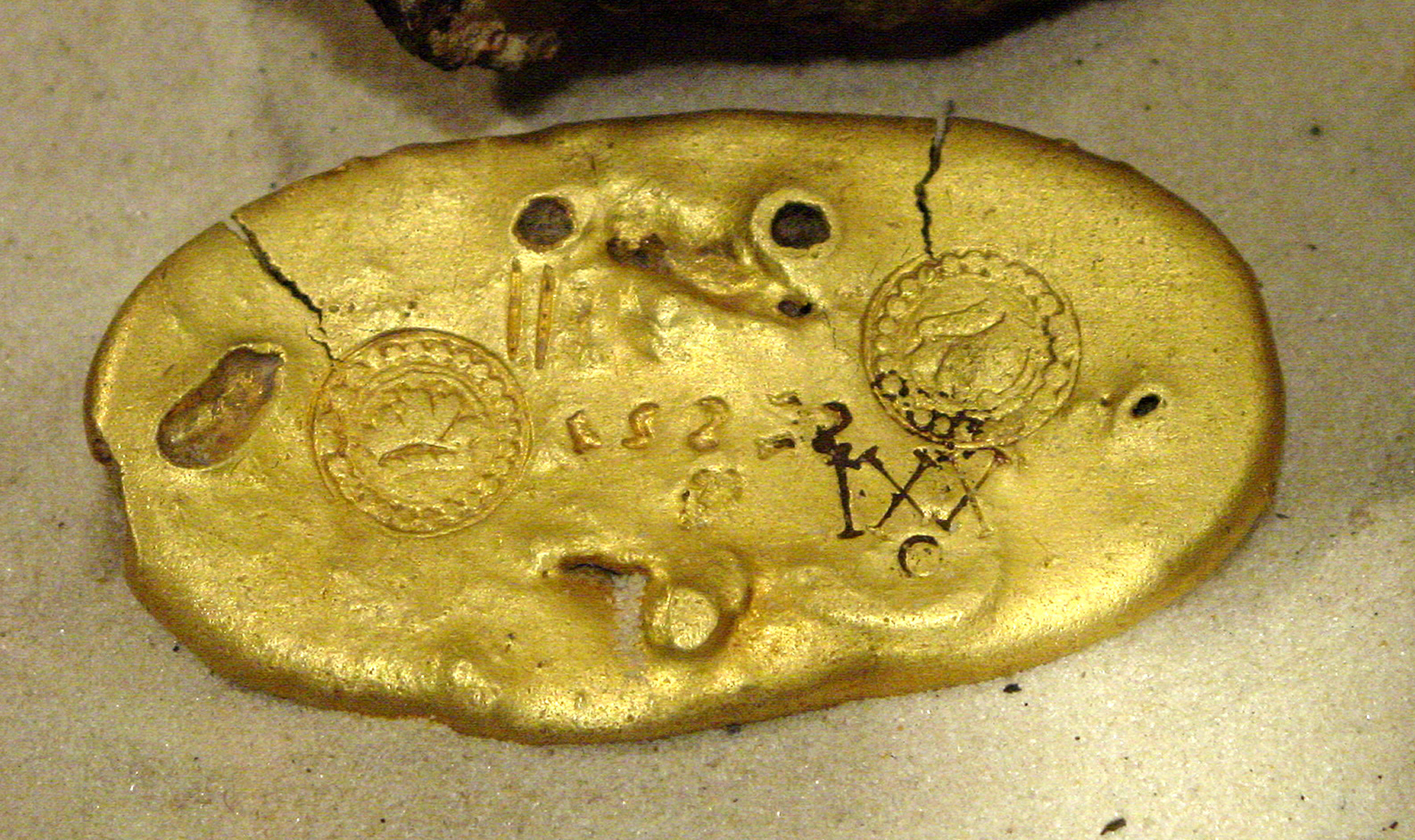Our featured Treasure of the Month for August is a gold pectoral bar from the 1715 Rio Mar wreckLocated in Vero Beach opposite the Rio Mar Golf Course. The capitana of the Terra Firma Fleet it was the largest galleon of the eleven Spanish ships leaving Havana harbor in 1715. Her official name wa... More site near Vero Beach, Florida.
Retrieved by Don Porter working from the salvage vessel Virgalona in 1969, this small bar is one of the very few gold bars or discs found on any of the 1715 Fleet wreck sites. Upon close inspection, the bar displays two small crown tax stamps, indicating that it was part of the registered cargo and not contraband. The Roman numerals IXX (XXI viewed from another angle) represents the fineness of the gold, here 21 kt. Tons of silver and gold coins have been salvaged from the 1715 wreck sites, but gold and even silver ingots are a Fleet rarity.
This piece is on display at The Museum of Florida History, Tallahassee. Image courtesy of The Florida Division of Historical Resources.
